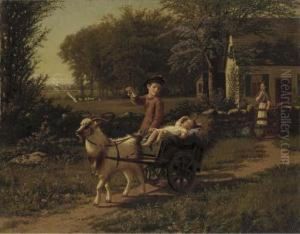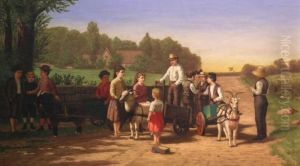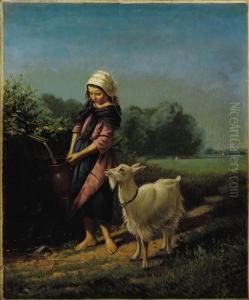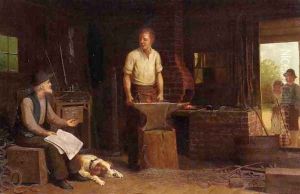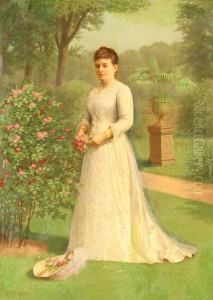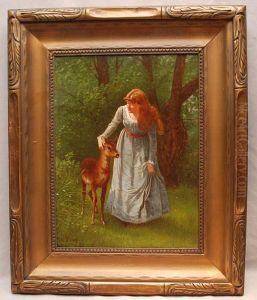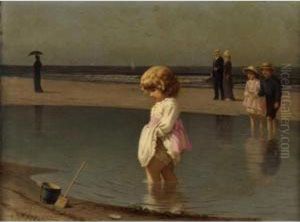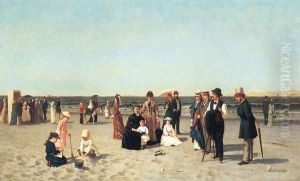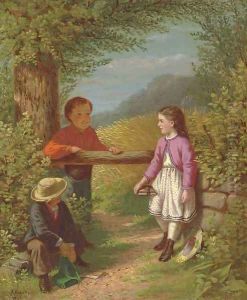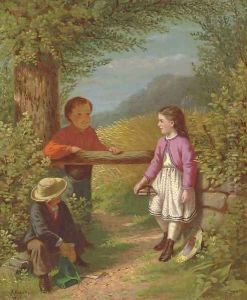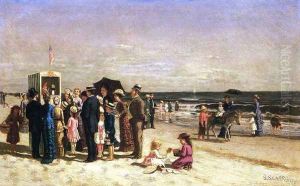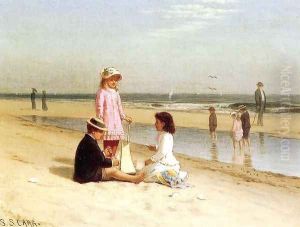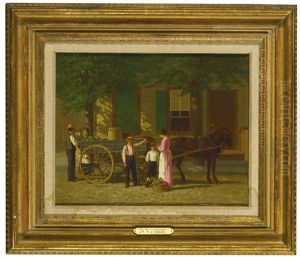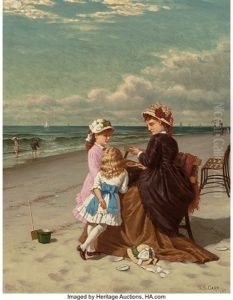Samuel S. Carr Paintings
Samuel S. Carr was an American landscape painter, born in England in 1837. He immigrated to the United States at a young age and is best known for his pastoral landscape paintings. Carr developed a distinctive style that was characterized by bright, clear colors and an attention to detail, which was influenced by his British background and the Hudson River School, a mid-19th century American art movement.
Carr settled in New York, where he became an active member of the art community. He exhibited his work at various institutions such as the National Academy of Design and the Brooklyn Art Association. Although Carr was not as widely recognized as some of his contemporaries, he enjoyed a successful career and his paintings were collected by art enthusiasts of the time.
Throughout his career, Samuel S. Carr was drawn to the serene and bucolic aspects of the American landscape. His scenes often depicted the leisurely activities of the rural gentry, such as picnics, boating, and fishing. These genre scenes were popular among the burgeoning middle class in America, who saw them as an escape from the rapidly industrializing cities.
Carr's work captures a transformative period in American history, reflecting both the idealization of the rural past and the reality of a country moving towards urbanization and modernity. Despite being an immigrant, Carr's paintings resonate with the nostalgia for the American pastoral tradition and the celebration of its countryside.
Samuel S. Carr passed away in 1908, leaving behind a body of work that contributes to the narrative of American art in the late 19th century. His paintings continue to be appreciated by collectors and art historians for their charm and historical value.

